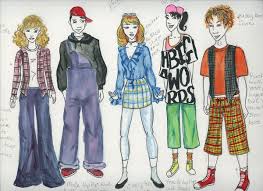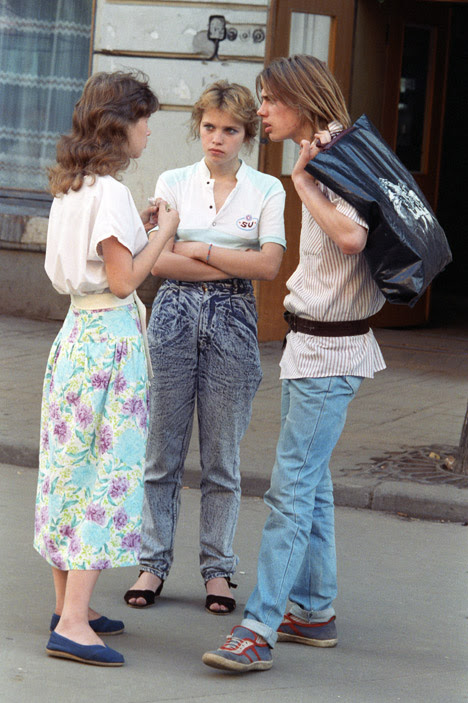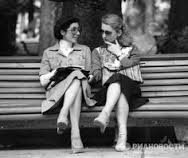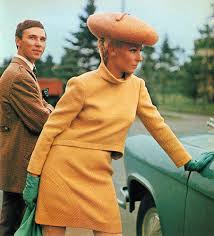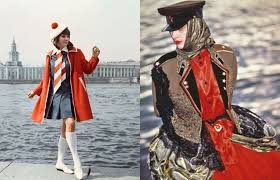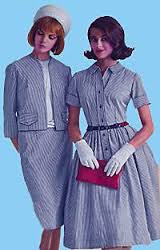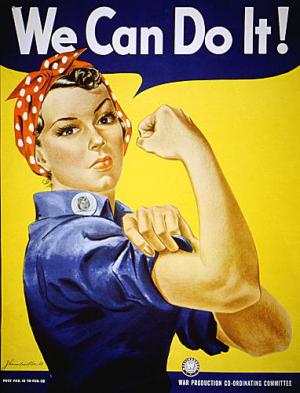The 1990’s were an anything-goes period that was defined all over the world by the slogan “Be yourself”. However, in Russia the need for self-realization was exacerbated by economic changes.
After the collapse of the Soviet Union and the switch to a market economy, a torrent of merchandise surged into the country from Turkey and Southeast Asia; these goods were not of the highest quality or most elegant appearance. Fashionistas acquired the ability to dress as they wanted, but the results were not entirely successful.
A careless ponytail, an over-sized T-shirt with a fun print and acid-washed jeans constituted the most subdued version of the female look. Then there were variations. For example, it was trendy to wear a lurid-coloured T-shirt whose lower edge, around 10–15 centimetres, was cut into vertical strips, each of which was decorated with a tiny coloured plastic clip.
